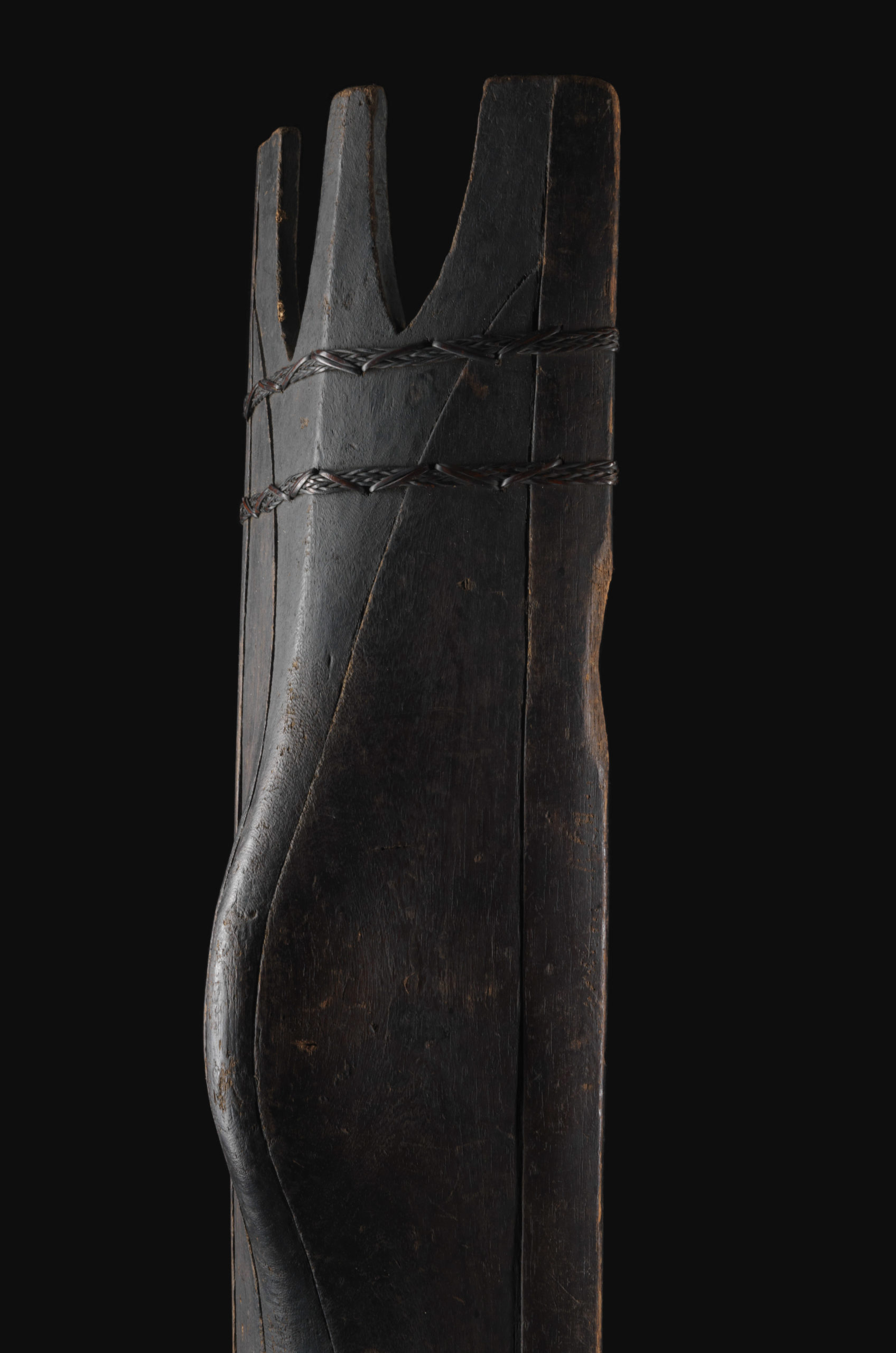Shield / Battle shield „kalasag“
| Object | Shield / Battle shield „kalasag“ |
| Culture | Northern Philippines, Luzon, Bontoc |
| Time | 19th century |
| Dimensions | Height 103cm, width 30,5 cm |
| Material | Wood, black lacquer, rattan |
The shield is made of wood in one piece, the handle is worked into the curvature of the shield.
Linear elements like the opposite segments of a circle in vertical direction are incorporated as decoration. Four woven rattan strips in horizontal direction give the sign additional stability. A black lacquer was applied to the front and back of the sign.
The Igorot shields are basically rectangular and are based on the freehand parry shield. The original shape of the parry shield was most probably the stick held in the middle, which was used to ward off enemy stick and club blows. Unprotected was the hand that clasped the stick at the centre of gravity. The next step was inevitably to cut a grip hole in a thick parry stick at the back, whereby the hand was protected by the part of the stick facing the opponent. Shields salawaku from the Moluccas are still very close to this form.
The shield of the Igorot is a highly efficient protective weapon, which is best suited for man-to-man combat. It is large enough to protect the crouched body behind it. The upper tines are used to give protection to the head while maintaining good visibility and to catch the opponent’s spear or headhunter’s axe and hinder him by tilting the shield. Sometimes the tines are also driven between the legs of the opponent to trip and fall. The two lower prongs cover the legs against blows. They can also bind the opponent’s weapons. It is said that the lower incision is used to hold a fallen or wounded enemy to the ground to cut off his head. However, this is probably an imaginative Western interpretation; it is hardly possible to put it into practice.
Supplementing Literature Back to room view




